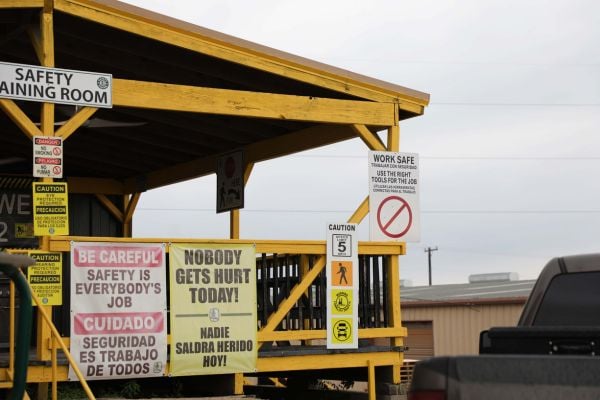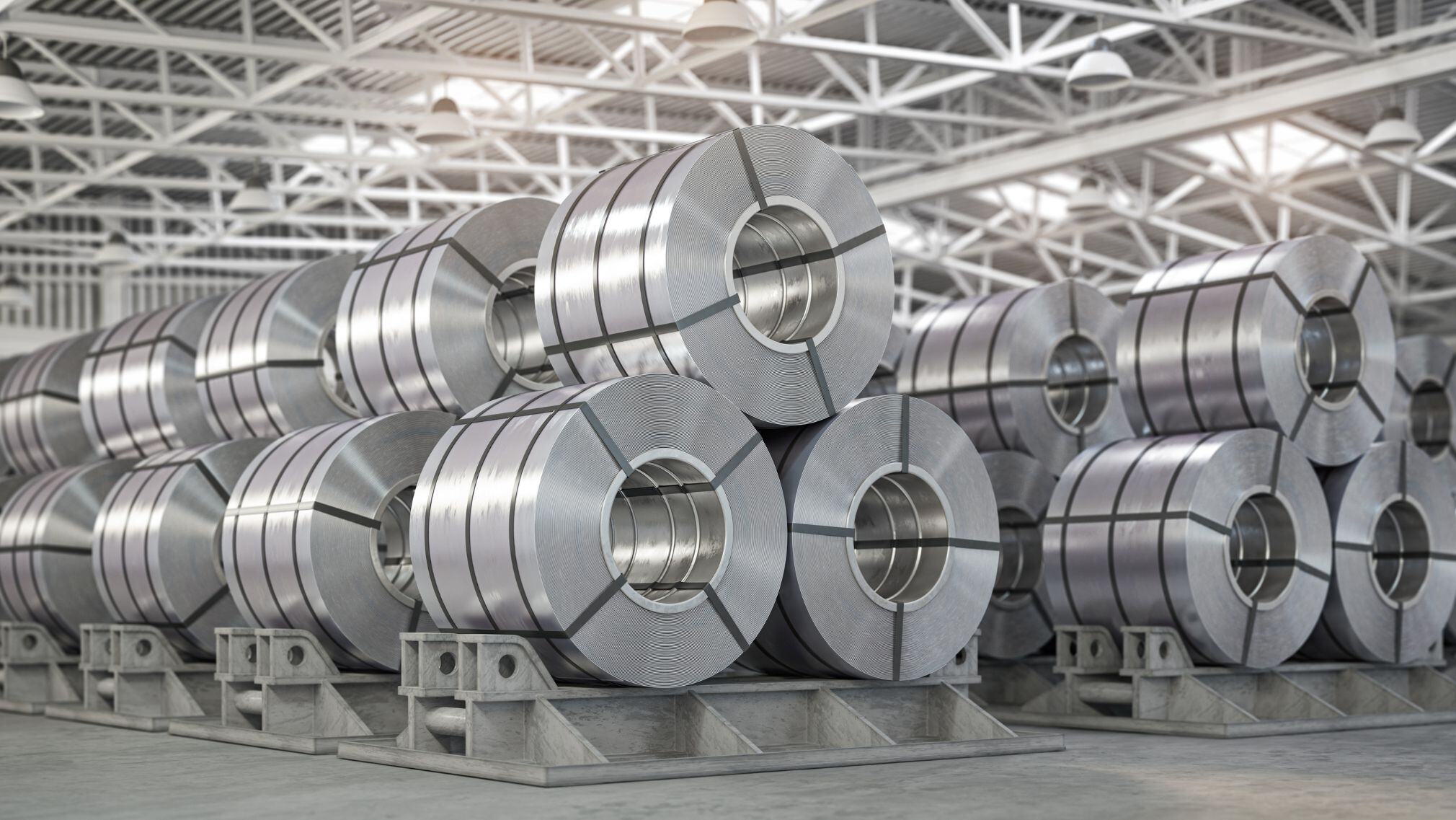5 Guidelines for Handling Sheet Metals Safely
For companies that manufacture, transport, or handle sheet metal, securing the safety and well-being of warehouse employees is essential. The hazards...
4 min read
UFP Packaging Updated on October 28, 2025

Creating a workplace culture of health and safety is about finding and preventing dangers that an employee could be exposed to. All organizations need to maintain a comprehensive set of safety operating procedures to protect employees from injury, mental and physical illness, or fatality.
In November 2023, the U.S. Bureau of Labor Statistics announced a 7.5% surge in nonfatal workplace injuries and illnesses reported by private industry employers in 2022. The total number of cases reached 2.8 million. Delving into these figures from the news release, it is evident that prioritizing safety in the workplace is now more crucial than ever.
At UFP Packaging, our excellent safety record is evidence that safety is our priority. As North America's leading total packaging solutions provider with more than 90 locations globally, we understand the need for a dedicated team overseeing health and safety initiatives.
To create safer workplaces, you must reshape your employees' mindset on safety, making it a fundamental aspect of local-level workplace culture. This article will take you through the four essential components of establishing and maintaining a strong health and safety culture, offering insights into our strategies and approaches in the manufacturing industry.

Safety office at UFP Packaging in Grandview, Texas
Let’s start at the beginning. To create a health and safety-centered work culture, it is imperative to have a well-defined set of operating procedures and policies. These guidelines serve as the foundation for safety practices. Conduct a thorough risk assessment of your workplace to identify potential hazards, risks, and areas where accidents could occur.
At UFP Packaging, we conduct Job Safety Analyses (JSAs), which involve in-depth assessments of each job role to identify potential risks and hazards. Additionally, Job Difficulty Assessments (JDAs) help us evaluate the level of physical strain and potential risks associated with various tasks. Worksite inspections and regular auditing are also performed to prevent injuries.
Managers play a pivotal role in training employees on the importance of adhering to these standards and holding them accountable for compliance. Without proper awareness, employees are not likely to take precautions seriously, leading to injury. Training should be in-person and hands-on. Interactive video training is a great addition to traditional training. Follow these sessions with comprehensive tests to ensure understanding.
Once you have established your policies and procedures, it is crucial to understand that safety goes beyond a rulebook; it is a mindset that should permeate every aspect of your organization. Leading by example is vital in effectively implementing these standards and cultural shifts. If this does not happen, employees will not feel the need to comply -- leading to dangerous situations. Acknowledge and reward those who consistently adhere to health and safety protocols and address non-compliance; doing so will ingrain safety as a core organizational value.
For visual reinforcement, we display eye-catching banners throughout our facilities. These banners feature catchy reminders, like “Keep safety in mind -- it will save your behind” and “Know safety, no pain. No safety, know pain.” We also demonstrate this by ensuring our equipment is properly labeled with warnings about hazards and provide other reminders. This measure gives employees a visual cue to keep safety first. Furthermore, maintaining open communication channels for discussing health and safety questions and concerns is vital for fostering a safety-focused work culture.
Now that you have established written workplace standards and are fostering a safety culture, you must appoint responsible individuals to deliver continuous health and safety assessments. Designated personnel play a pivotal role in keeping these policies up-to-date and ensuring the effective implementation of this new culture.
At our locations, we hire dedicated safety leaders to oversee this important role. We seek individuals with OSHA credentials, safety experience, strong interpersonal skills, charisma, and an innovative spirit. These leaders facilitate the safety program, ensuring team member buy-in and the smooth implementation of the company’s health and safety measures. Safety leaders are responsible for internal audits, workplace training, and compliance with OSHA, regulatory, and environmental standards. They also conduct regular safety meetings and training sessions.
In addition, these leaders spearhead the formation of safety committees at each location. These committees consist of employees from various departments and leadership, ensuring representation across all levels of the organization. This inclusive approach keeps every area of the plant well-informed and actively involved in improving safety standards. At UFP Packaging, our safety committee members are additional leaders in the program, acting as the eyes and ears for workplace health and safety. They are the liaison between floor-level team members and leadership.
In regard to safety, adopting a proactive approach is not just beneficial but essential. Relying on reactive measures poses significant risks to employees and the company. To foster a proactive safety culture, there are several key strategies to prioritize. First, preventive actions should be at the forefront of your company’s safety initiatives. Rather than reacting to incidents, identify potential risks and hazards specific to your industry and workplace, and take proactive steps to address them. Regular safety assessments should also be conducted to evaluate the effectiveness of your operating procedures and measures, facilitating ongoing improvement.
Customizing training materials is needed to ensure accessibility and comprehensibility for all employees, regardless of their role or experience level. Tailor training to create hazard communication standards and address the unique risks associated with your industry.
Additionally, emergency preparedness is fundamental for a robust health and safety workplace culture. Conduct regular drills and simulations to test your employees’ ability to react appropriately during crises. Provide easy access to clear instructions on evacuation routes, emergency contacts, and first-aid procedures to ensure everyone knows what to do in case of an emergency.
In addition to these proactive health and safety measures, you need to provide personal protective equipment (PPE) to all employees with comprehensive training on its use and significance. The specific PPE required will vary by industry, but at UFP Packaging, we provide our team members with any necessary PPE as determined by our Hazard Assessment. Equipment includes, but is not limited to, safety glasses, earplugs, face masks, and gloves.
Reflecting on the alarming surge in workplace injuries and illnesses reported in 2022, your commitment to health and safety should become a priority. At UFP Packaging, the safety and well-being of our team members are paramount to our core values. We work daily to foster a culture of health and safety that extends beyond the confines of the workplace, permeating every aspect of our employees' lives. Throughout this article, we have discussed the importance of establishing clear policies and safety operating procedures, promoting safety as a core value, appointing safety leaders, and adopting a proactive approach to safety. By implementing these four components in your organization, you will help establish and maintain a health and safety culture in your workplace.
Want to receive all of the latest packaging news and insights?

For companies that manufacture, transport, or handle sheet metal, securing the safety and well-being of warehouse employees is essential. The hazards...

When moving your products from point A to point B, product packaging plays a crucial role that often goes unnoticed. It involves more than just...

Storing steel and metal involves implementing various protective measures to prevent rust formation. These measures include thorough cleaning, proper...